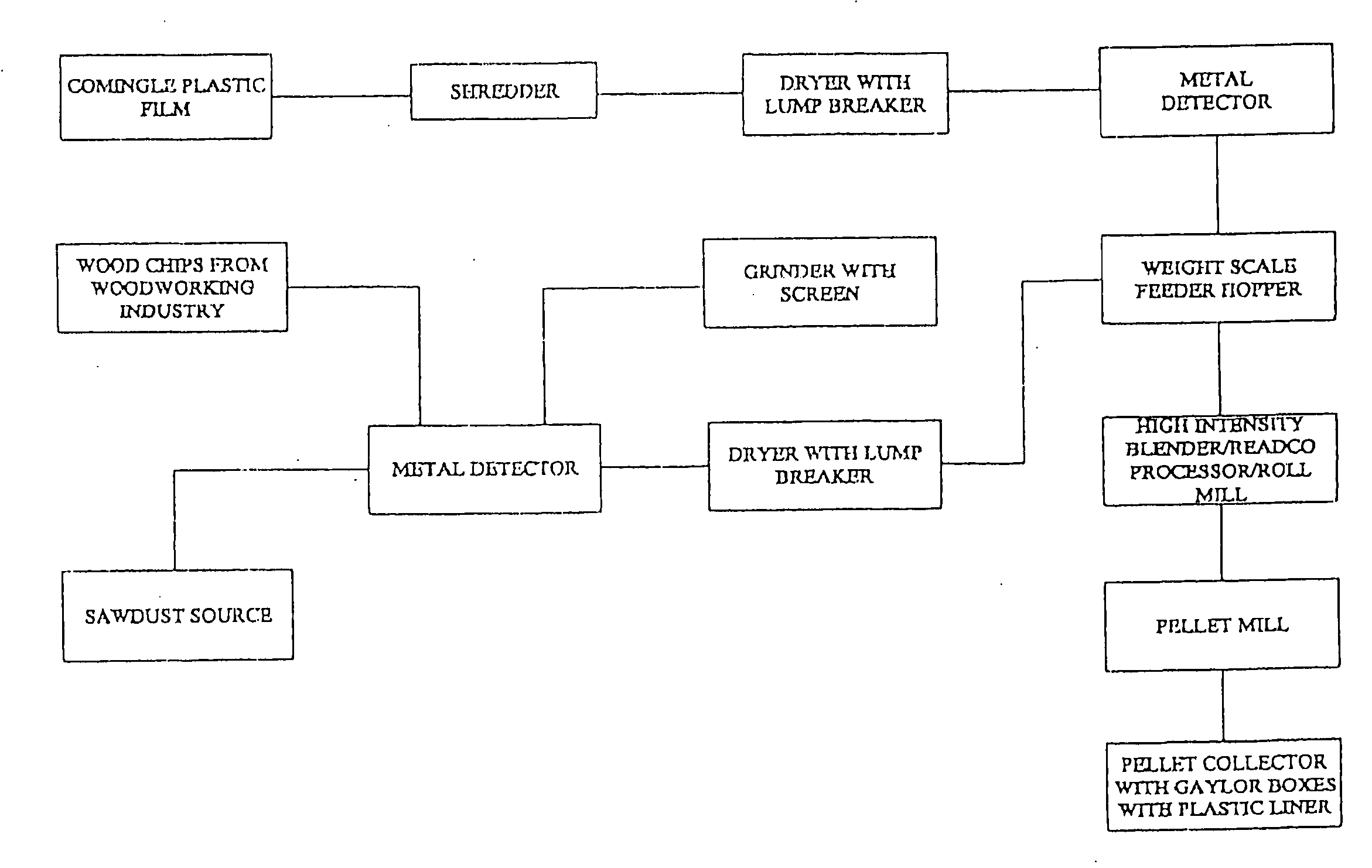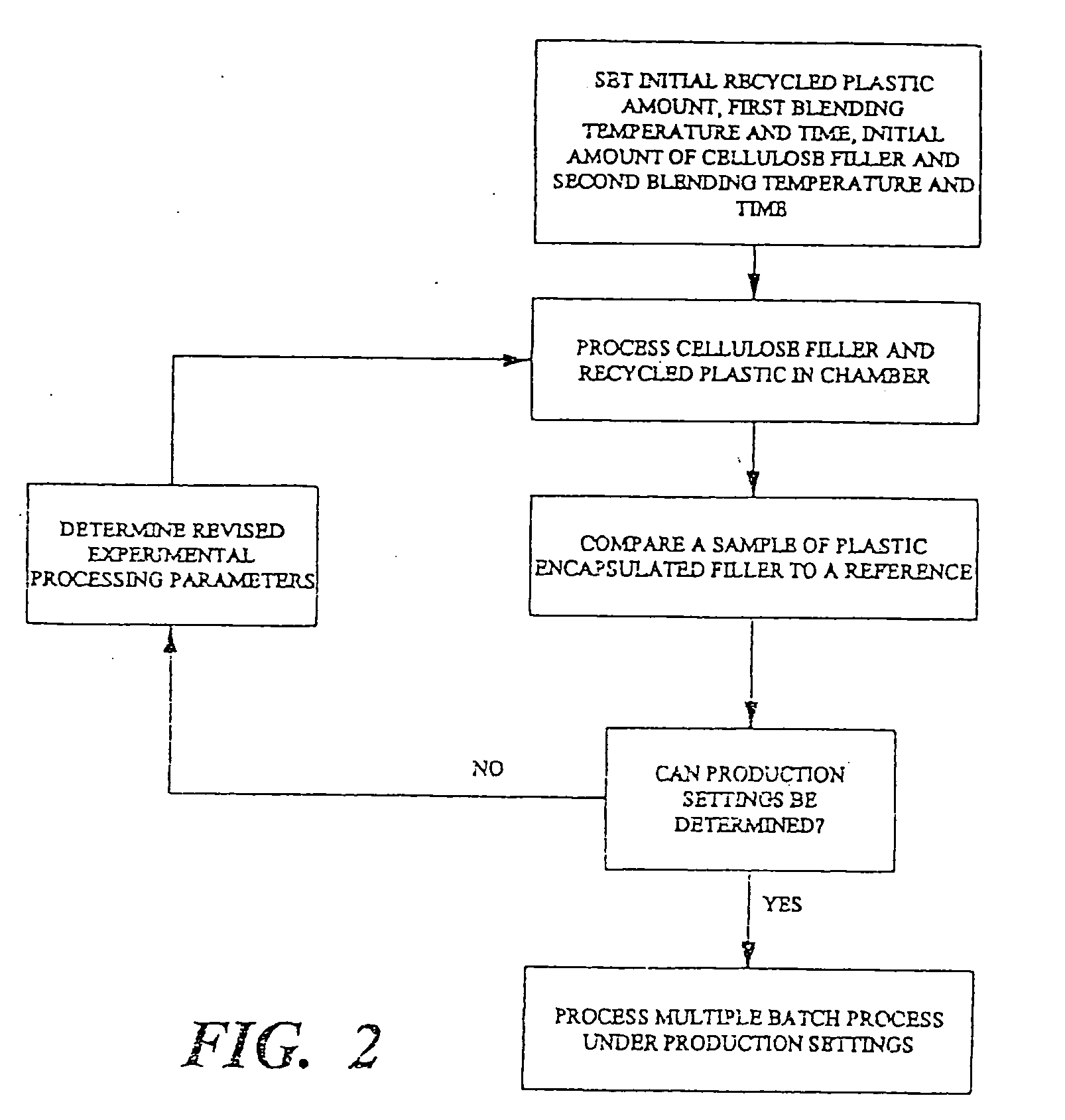Process for making modified cellulosic filler from recycled plastic waste and forming wood substitute articles
a technology of plastic waste and filler, applied in the field of plastic composites, can solve the problems of affecting the process, limiting the application of indoor materials, and low cost of materials, and achieve the effect of reducing the possibility of fir
- Summary
- Abstract
- Description
- Claims
- Application Information
AI Technical Summary
Benefits of technology
Problems solved by technology
Method used
Image
Examples
Embodiment Construction
[0068] The invention relates to a process for cleaning contaminated plastic waste by absorbing the fluxed plastics with the use of specific amounts of cellulosic materials so that the cellulosics become encapsulated with the fluxed plastic without, at the same time, being conglomerated with such fluxed plastics. The resulting individually coated cellulosic materials are then screened off from the remaining non-fluxed plastics and other non-meltable contaminants. The plastic modified cellulosic materials can be used as a feed stock for making structural and non-structural articles of thermoplastic composite materials with the added advantages of being able to combine non-compatible plastics into various alloys with the cellulosic materials. These plastic alloys permit the engineering of formulas to specific property requirements, i.e. good strength, environmental stability, paintability, glueability, stainability, etc.
[0069] Referring to FIG. 1, a recycled thermoplastic is first sel...
PUM
| Property | Measurement | Unit |
|---|---|---|
| weight % | aaaaa | aaaaa |
| mesh size | aaaaa | aaaaa |
| aspect ratio | aaaaa | aaaaa |
Abstract
Description
Claims
Application Information
 Login to View More
Login to View More - R&D
- Intellectual Property
- Life Sciences
- Materials
- Tech Scout
- Unparalleled Data Quality
- Higher Quality Content
- 60% Fewer Hallucinations
Browse by: Latest US Patents, China's latest patents, Technical Efficacy Thesaurus, Application Domain, Technology Topic, Popular Technical Reports.
© 2025 PatSnap. All rights reserved.Legal|Privacy policy|Modern Slavery Act Transparency Statement|Sitemap|About US| Contact US: help@patsnap.com



